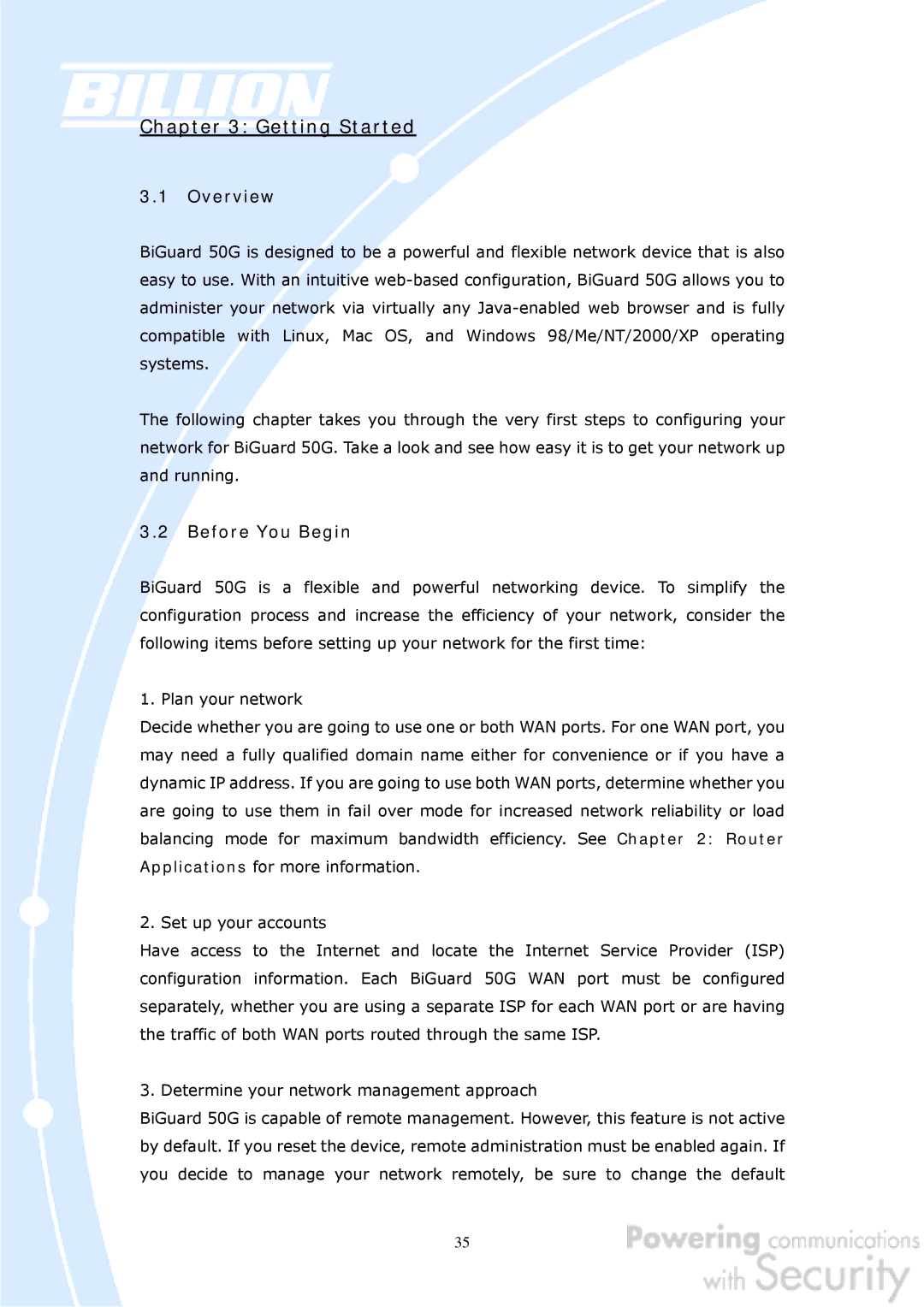
Chapter 3: Getting Started
3.1Overview
BiGuard 50G is designed to be a powerful and flexible network device that is also easy to use. With an intuitive
The following chapter takes you through the very first steps to configuring your network for BiGuard 50G. Take a look and see how easy it is to get your network up and running.
3.2Before You Begin
BiGuard 50G is a flexible and powerful networking device. To simplify the configuration process and increase the efficiency of your network, consider the following items before setting up your network for the first time:
1. Plan your network
Decide whether you are going to use one or both WAN ports. For one WAN port, you may need a fully qualified domain name either for convenience or if you have a dynamic IP address. If you are going to use both WAN ports, determine whether you are going to use them in fail over mode for increased network reliability or load balancing mode for maximum bandwidth efficiency. See Chapter 2: Router Applications for more information.
2. Set up your accounts
Have access to the Internet and locate the Internet Service Provider (ISP) configuration information. Each BiGuard 50G WAN port must be configured separately, whether you are using a separate ISP for each WAN port or are having the traffic of both WAN ports routed through the same ISP.
3. Determine your network management approach
BiGuard 50G is capable of remote management. However, this feature is not active by default. If you reset the device, remote administration must be enabled again. If you decide to manage your network remotely, be sure to change the default
35
